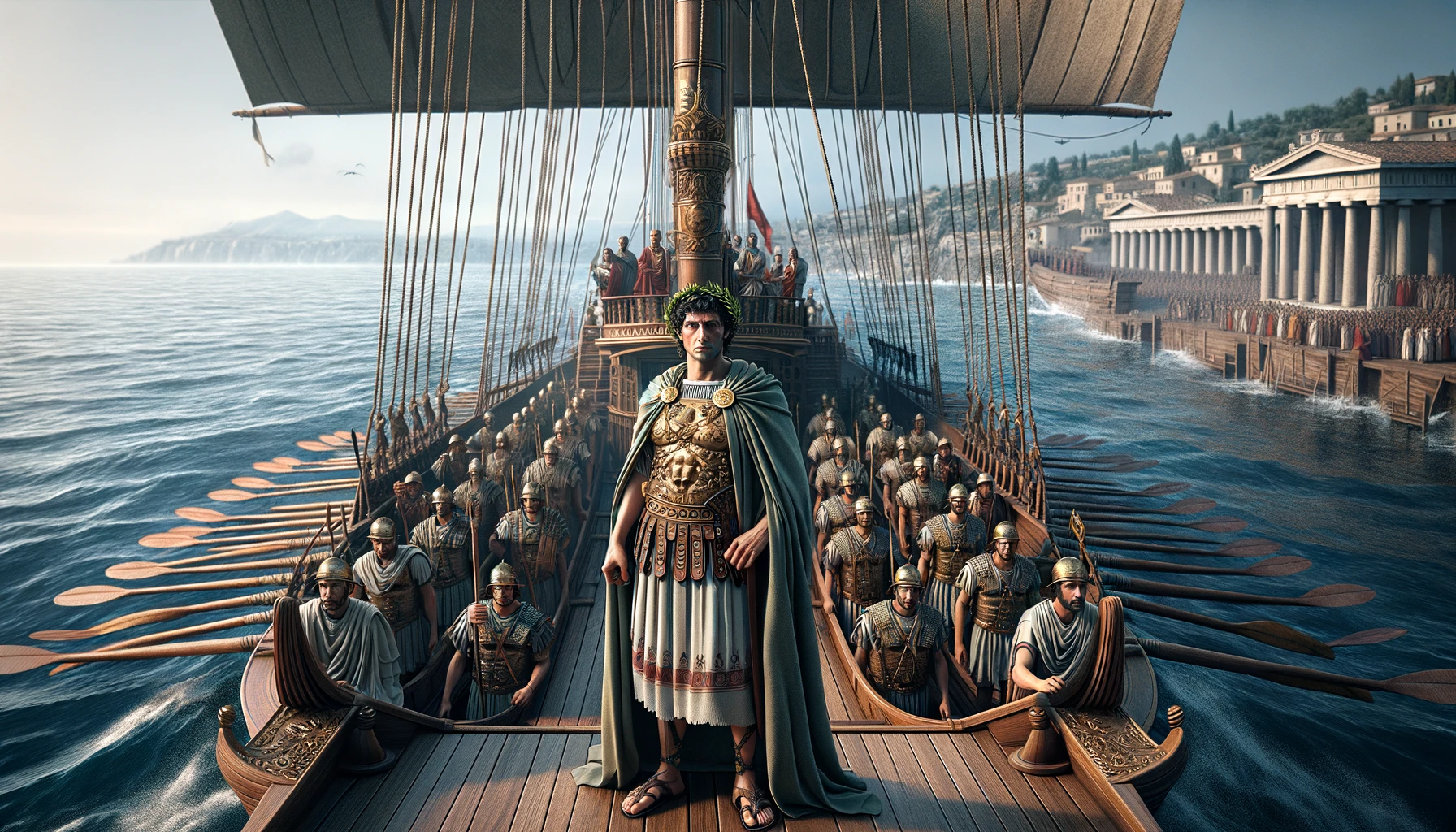In the mid-3rd century, the Roman Empire faced a tumultuous period marked by barbarian invasions, revolts, and the rise of new imperial claimants. While Britannia seemed to be spared from these disturbances, it was not immune to the growing economic impact of inflation. In 259, Postumus established a breakaway Gallic Empire by rebelling against Gallienus, and Britannia remained a part of this empire until 274, when Aurelian restored unity to the empire.
Around 280, Bonosus, a half-British officer leading the Roman Rhenish fleet, faced a German attack that destroyed the fleet at its moorings. To evade punishment, he declared himself emperor in Colonia Agrippina (Cologne), only to be defeated by Marcus Aurelius Probus. Shortly after, an unnamed British provincial governor also led a failed revolt, which Probus suppressed using Vandal and Burgundian irregular forces.
Carausian Revolt (286–296AD)
The Carausian Revolt between 286 and 296 resulted in the brief existence of a Britannic Empire. Carausius, a Menapian and leader of the Britannic fleet, rebelled after learning of an execution order by Emperor Maximian, accusing him of collaborating with Frankish and Saxon pirates and embezzling treasures. He gained control over all British provinces and parts of northern Gaul, while Maximian was preoccupied with other rebellions. An initial invasion in 288 did not overthrow him, leading to a tense peace where Carausius minted coins and sought formal recognition. However, in 293, Constantius Chlorus launched a renewed attack, capturing the rebel port of Gesoriacum (Boulogne-sur-Mer) and then targeting Carausius’s Gallic territories and Frankish allies. Following this, Carausius was overthrown by his treasurer, Allectus. Julius Asclepiodotus then landed near Southampton, defeating Allectus in a land battle.
Diocletian’s reforms
Around 296AD the British provinces were once-more restructured, this time during the reforms of emperor Diocletian, whereby the existing provinces were each split into two; Britannia Superior in southern Britain became Britannia Prima in the west governed from Cirencester, and Maxima Caesariensis in the east which was governed from London; while Britannia Inferior in the north became Britannia Secunda governed from York, and Flavia Caesariensis governed from the colonia at Lincoln.
The military provinces were governed by young(ish), martially-minded men with praetorian status; Britannia Prima had two legions, the Second Augusta at Caerleon and the Twentieth at Chester, and Britannia Secunda one legion, the Sixth housed at York. The productive, more-civilized Caesariensis provinces had no legionary forces, very few auxiliary troops, and were governed by ex-consulars possessing great legislative and judicial authority.
This whole exercise followed close on the heels of Carausius’ revolution in Britain, and was undertaken primarily in order to separate the military and civil administrative posts, which ensured that a) the praetorian governors commanding the troops would not have the money to fund a rebellion, and b) the consular governors in charge of the purse-strings, would not have the troops to foment revolt.
Emperor Constantius
In 306, Emperor Constantius, despite his failing health, led an army back to Britain with the intention of invading the north, bolstered by recently reinforced provincial defenses. The details of his campaign are sparse and mainly derived from limited archaeological findings and fragmented historical records. These suggest he ventured to the northernmost parts of Britain and achieved a significant victory in early summer before heading south. His son, the future Emperor Constantine the Great, accompanied him in northern Britain for a year, engaging in campaigns against the Picts beyond Hadrian’s Wall. Constantius passed away in York in July 306, with Constantine by his side. Constantine then strategically leveraged Britain as his base to ascend to the imperial throne, unlike the previous usurper Albinus.
Mid-century, the province briefly aligned with the usurper Magnentius after the death of Constans. Following Magnentius’ defeat and death at the Battle of Mons Seleucus in 353, Constantius II sent Paulus Catena, his chief imperial notary, to Britain to root out Magnentius’ supporters. The mission soon devolved into a broad and unfocused persecution, prompting the intervention of vicarius Flavius Martinus. When Paulus accused Martinus of treason in retaliation, Martinus attempted to assassinate him but ultimately took his own life.
Velantia 369AD
Another province was added to Britain in 369AD by the emperor Valentinian, essentially an area in the north of Britain beyond Hadrian’s Wall – Dumfries & Galloway and the Scottish Borders – which was reestablished under tentative military rule and named Velantia. This act was to bring the tribes of the Southern Uplands – the Votadini, Selgovae and Novantae – under the aegis of Rome once more, though the Damnonii of the Forth-Clyde isthmus this time lay outside the boundaries of the empire.
The Notitia Dignitatum or ‘Register of Dignitaries’ is a document of great historical importance produced in the late-empire which lists the complete Roman administrative hierarchy, giving us the names of the various posts and the departments to which they belonged. This document also gives the disposition of the armed forces throughout the entire Roman world, giving the names of each unit, the rank of their individual commanders and also the name of their garrison fort. It remains the sole classical source for the names of the nine forts under the command of the “Count of the Saxon shore in Britain”, from Brancaster in Norfolk to Portchester in Hampshire; it is also justly famous for the section entitled Item per lineam Valli or “The route along the line of the Wall”, which enumerates most (but not all) of the forts on Hadrian’s Wall, and also includes many others forts throughout the north of Britain such as Lancaster and Ribchester.
